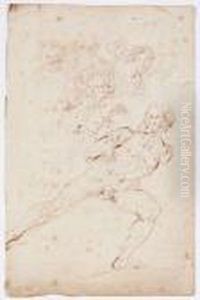Francois Roettiers Paintings
Francois Roettiers was a notable member of the Roettiers family of goldsmiths and medallists, which included several generations of renowned artists in the field, originating from France and later working across Europe. Born in 1703, Francois descended from a line of distinguished craftsmen, which can be traced back to his grandfather, Philip Roettiers, and was continued by his father, Joseph Roettiers, both of whom served as engravers at the French Mint.
The Roettiers family is especially recognized for their work in creating coins and medals during a time when such items were not only currency but also works of art that reflected the power and grandeur of the reigning monarchs. Francois, in keeping with the family tradition, trained under the tutelage of his father and eventually developed his own reputation as a skilled artist.
Francois Roettiers' career was punctuated by his move to England, where he became associated with the Royal Mint. His relocation was part of a larger Huguenot exodus following the revocation of the Edict of Nantes in 1685, which led to significant numbers of French Protestants fleeing religious persecution. In England, Roettiers' talent was recognized, and he contributed to the thriving artistic scene of the 18th century. Notably, he worked during the reigns of George II and George III, a period marked by the development of a British national style in the decorative arts.
Throughout his career, Francois Roettiers was known for his skillful execution and intricate designs, which were evident in the medals and coins he produced. His artistic contributions continued the prominence of the Roettiers family within the European art world, a legacy that would carry on through his descendants.
Francois Roettiers passed away in 1770, leaving behind a body of work that remains appreciated by numismatists and art historians alike. His legacy is not only reflected in the individual pieces he crafted but also in the continued influence of the Roettiers family on the art of medal and coin design throughout the 18th century.

